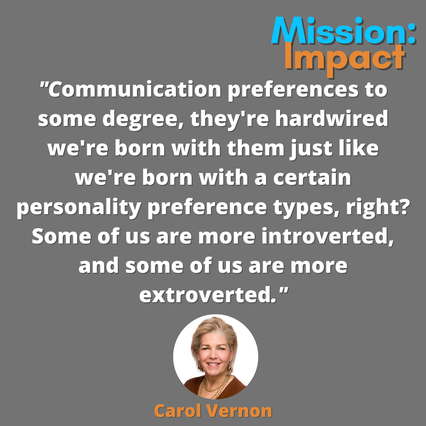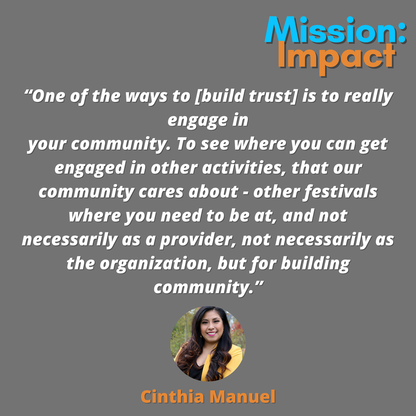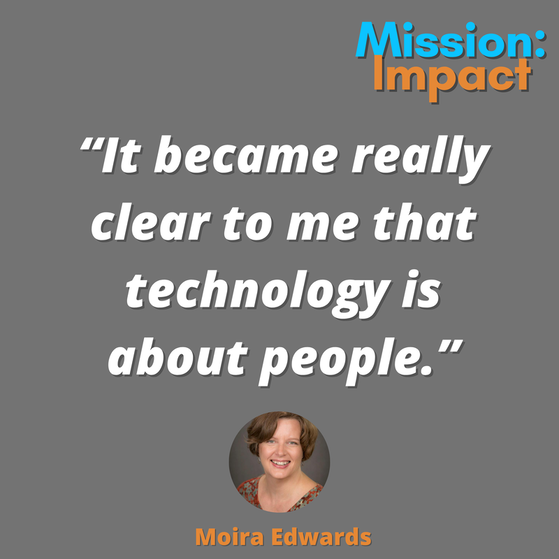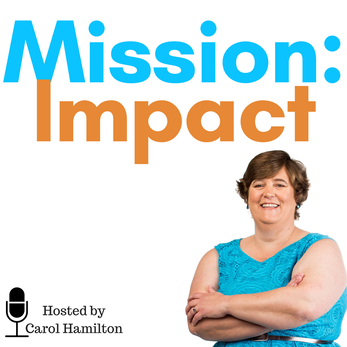Mission: Impact podcast & blog
Build a better world without becoming a martyr to your nonprofit cause
Listen on:
|
Episode 10: This week we’re talking to Heather Yandow.
We talked about: • What gets in the way of nonprofits hiring consultants successfully. • Why an RFP process is often not the best approach to having a great experience with a consultant. • The trends we are observing in this time of disruption. Scenario Planning: An article describing the process from MIT Sloan management school Heather Yandow brings more than 20 years of experience as an outreach coordinator, coalition leader, project manager, and fundraiser to Third Space Studio. She helps organizations with strategic planning, board development, change management, leadership development, and going from good to great. She has also served on the Board of Directors of Democracy NC, ncyt: NC’s Network of Young Nonprofit Professionals, and the Beehive Collective (a giving circle). She is also the founder of Nonprofit.ist, an online platform for nonprofits to find the consulting expertise they need. Links: www.nonprofit.ist/ www.linkedin.com/in/heatheryandow/ www.thirdspacestudio.com/ Click "Read More" for Transcript:  Episode 09: This week we’re talking to Carol Vernon We talked about:
Carol Vernon is a certified executive coach and principal of Communication Matters, an executive coaching firm that helps leaders and teams elevate their executive presence and communication skills in order to grow their impact. Carol was inspired to start Communication Matters after years of observing that doing your job well isn’t enough. Without executive presence and the ability to communicate effectively with diverse stakeholders, leaders can’t achieve their full potential or achieve the results they seek. Previously, Carol was the senior communications director at the National Cable and Television Association, as well as acting executive director of the cable industry’s education foundation, with both people management and budget responsibilities. Prior to that she worked on Capitol Hill and on more than a dozen political campaigns. Links: https://commmatters.com/ https://www.linkedin.com/in/carol-vernon-aa09833/ https://www.facebook.com/ComMatters/ Click "Read More" for Transcript:  In episode 7 of Mission: Impact, Carol Hamilton, nonprofit strategy consultant is talking to Cinthia Manuel. We talked about: • the challenges nonprofits face in trying to make their services more accessible. • What to think about before getting started with community engagement. • Why Cinthia thinks traditional mentoring is backwards. Cinthia Manuel is the CEO and Founder of Autentica Consulting, LLC. She specializes in Equity, Diversity and Inclusion; Mentoring; and Multicultural Marketing. She is the proud daughter of immigrants and a first-generation Latina. She was named one of the 23 Business People to Watch in 2019 by the Portland Business Journal for her work contributing to communities of color through professional development, mentorship, and entrepreneurship. She is passionate about education and has worked with the Gates Millennium Scholarship Alumni Association, Hispanic Scholarship Fund, and the United Negro College Fund. She is a TEDx speaker. She deeply believes that building strong communities is key to creating a powerful voice that drives change. Links www.autenticaconsulting.com/ www.linkedin.com/company/autenticaconsulting/ twitter.com/AutenticaCo Click "Read More" for Transcript:  This week we’re talking to Moira Edwards. We talked about: • how technology supports the work of nonprofits and associations. • Moira explains the three levels of IT infrastructure that leaders need to consider and how an organization typically would apportion the budget to support those three levels • the concept of the peace time and the war time CEOs come into play as organizations manage the quick shifts forced onto them by the COVID-19 pandemic. Moira Edwards is the President of Ellipsis Partners and focuses on the impact of technology on organizational strategy. As head of Ellipsis Partners, she helps associations and non-profits make smart technology decisions to create member value and support critical business operations. Links: https://www.linkedin.com/in/moiraedwards https://www.ellipsispartners.com/ Click "Read More" for Transcript:  My goal is to interview a variety of people who help nonprofit and association professionals do their work more effectively. I hope to learn from them. Mission: Impact is the podcast for nonprofit professionals who want to do good in the world without being a martyr to the cause. I especially hope that our conversations will spark insights for you that you can apply to the work you do in your organization. |
Archives
April 2024

Grace Social Sector Consulting, LLC, owns the copyright in and to all content in and transcripts of the Mission: Impact podcast, as well as the Mission: Impact blog with all rights reserved, including right of publicity.
|
Telephone301-857-9335
|
info[at]gracesocialsector.com
|
Grace Social Sector Consulting, LLC, owns the copyright in and to all content in, including transcripts and audio of the Mission: Impact podcast and all content on this website, with all rights reserved, including right of publicity.
|